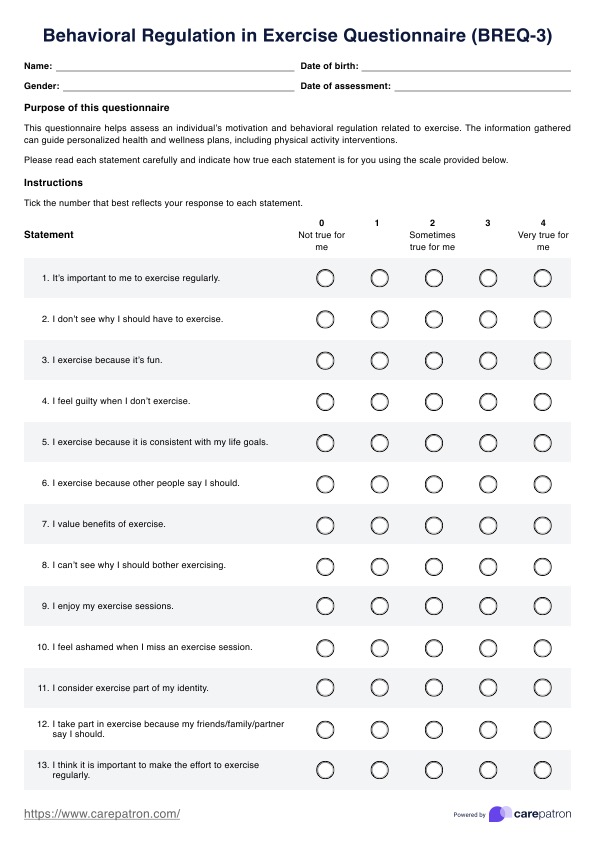The Behavioural Regulation in Exercise Questionnaire (BREQ) is a validated tool used to assess the different types of motivation influencing an individual’s exercise behavior. It is grounded in Self-Determination Theory and helps measure motivational regulation across a continuum from external to intrinsic motivation.

Behavioral Regulation In Exercise Questionnaire
Use Carepatron's free BREQ PDF with an example to help assess behavioral regulation in exercise and understand patient motivation types in clinical settings.
Behavioral Regulation In Exercise Questionnaire Template
Commonly asked questions
The BREQ-3 measures six subtypes of motivational regulation: amotivation, external regulation, introjected regulation, identified regulation, integrated regulation, and intrinsic motivation. These subscales reflect varying degrees of autonomy in an individual’s exercise motivation.
The intrinsic motivation subscale represents the most autonomous form of motivation, as it reflects engaging in exercise for inherent enjoyment and personal satisfaction.
EHR and practice management software
Get started for free
*No credit card required
Free
$0/usd
Unlimited clients
Telehealth
1GB of storage
Client portal text
Automated billing and online payments











